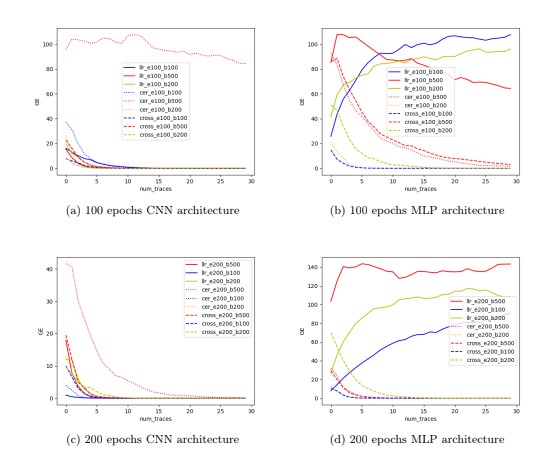
One of the more extensive projects I have done into Side-Channel Anaylsis (SCA) is into the evaluation metrics a Deep Learning Algorithm would to assess the performance and effectiveness of the model it procudes. In this work two former, fellow students (Sengim Karayalcin and Jari Bervoets) and I explore designing a more efficient self-developed metric called Log-Likelihood Ratio (LLR). You can find the code for this project here on Github. There you will find all the models that we used, and a setup explanation if you want to reproduce our results. You should also note that we have also extensively discussed our results in a paper we wrote, you can download it here and read the abstact below:
The field of side channel analysis (SCA) has increasingly been using Deep Learning to enhance the attacks. However, attack evaluation metrics, like Guessing Entropy (GE) and Success Rate (SR), are computationally inefficient. Furthermore, traditional Deep Learning metrics, like accuracy and precision, are not suitable for evaluating Deep Learning models in the context of SCA, as classes are often imbalanced. However, recently Zhang et al. have proposed a new evaluation metric for SCA, Cross Entropy Ratio (CER), that provides a good indication of the success of the attack and is viable to embed in Deep Learning Algorithms. Additionally this metric can be used as a loss function to train better models when training data is imbalanced. Throughout this report, a reproduction of the results of the paper introducing CER will be showcased, and a self-developed metric, the Log-Likelihood Ratio (LLR), will be introduced as well. These two metrics were compared to Cross Entropy (CROSS) and each other as loss functions, using several neural network architectures and data-sets. The final results of this report will showcase that CER, as a loss function, in the context of SCA, when classes are imbalanced, is better than using regular Cross Entropy. LLR performs slightly worse than CER in almost every scenario, but is generally better than Cross Entropy. Therefore, this report shows that the results from Zhang et al. are reproducible and the CER metric can be used as a evaluation metric to more accurately evaluate Deep Learning models.